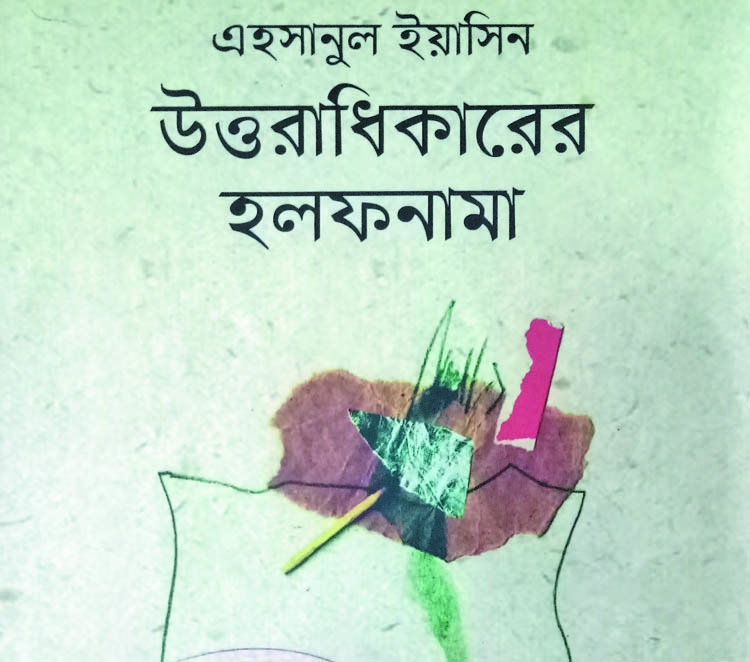Published: 12:40 AM, 17 September 2017
Self-sunken verses
 Uttoradhikarer Holofnama by Ehsanul Yasin, 1st edition published by Anindya Prokash in 2012 and 2nd edition published by Mot o Poth in February 2016
Uttoradhikarer Holofnama by Ehsanul Yasin, 1st edition published by Anindya Prokash in 2012 and 2nd edition published by Mot o Poth in February 2016 Oftentimes we make conversation with ourselves, listen to the voice deep down inside that soothes our disheveled soul or questions our inner self. This self-conversation is the most cherished and captivating. Ehsanul Yasin, in his recent book 'Uttoradhikarer Holofnama' has expressed his endearing conversation with self in poesy-tale. It was first published by Anindya Prokash in 2012 and later another edition was published by Mot o Poth in February 2016. The conceptual cover is done by Uttam Sen.
Poetry can be delineated in various ways, yet its mystery will be hidden in between the lines. Here, the writer has penned his utmost expression with devotedness which may help the readers to trade similar thoughts.Yasin is very straightforward in his way of expressing. As reader progress with the book, they pass through writer's mind.
A heartfelt, silent or sometimes a tongue-tied anguish touches them. Moreover, he delineates his sorrows and desire, the thoughts pass through his mind with idiomatic style. A constant conflict with self, and a feeling of resurrection flicker in his poesy-soliloquies. Also, his poetries contain the urge for the lost song, lost mother, and long lost history. Indisputably it symbolizes our forgotten identity-our long attained freedom that we do not value anymore.
Then again, writer raises his sunken feelings of enormous past and present, of his solitude in the treasure house of memories. He avouches how we are drowning in the ocean of half-truth and solely point out the present scenario of our sociopolitical situation. Then again, the contemporary speech echoes unerringly poet's reaction to the capitalist facade of society. If his poems are analyzed, his everyday soliloquies will be found to hymn with the metaphors brilliantly. Sometimes, it may make the readers travel from modernism to post modernism, chaos to serenity, love to lust, sorrow to happiness-which readers can feel intensely. Off and on, his poems epitomize nihilism, sometimes severe mockumentary, and sometimes magical mysticism. His lively verses with imageries and metaphors make readers live in the twilight, far in the distance.
His way of painting words and sketches context sparkles his flair. All the poesies can certainly be delineated as life cherishing forces as Mary Oliver has annotated once. With the magic-stairs of free-verse structure, the poet canvassed his courtliness through inventive poesy-syntax. Also, his grave tone and mingling the history with relaxed presentation makes the poesies more significant forsooth. Yasin reveals how immaculate beauty poetry is, there are stanzas that have made a bit vague points in terms of symbolism and metaphors, howbeit, that doesn't fade its exquisiteness. Also, his poems deal with a bundle of similes which certainly pave the way towards rich connotative meaning far and wide. Alliteration and assonance have stood like a twin guard throughout the book.
Where the noise of other people passes by, self-sunken passion turns within, out of the immersion of own world, poems sojourns, just like as dear natural possession, a piece of life-a voice from it. A work of art is good if it has arisen out of necessity like that. That is the only way one can judge it. In that assessment gun, "UttoradhikerHolofnama" has passed with flying colors. If expressed rhapsodically, it condenses the idea of life-and yes, sometimes, it's enchanting-without any ploy!
The reviewer is schooling with BRAC University and she can be reached at [email protected]
The reviewer is schooling with BRAC University and she can be reached at [email protected]




